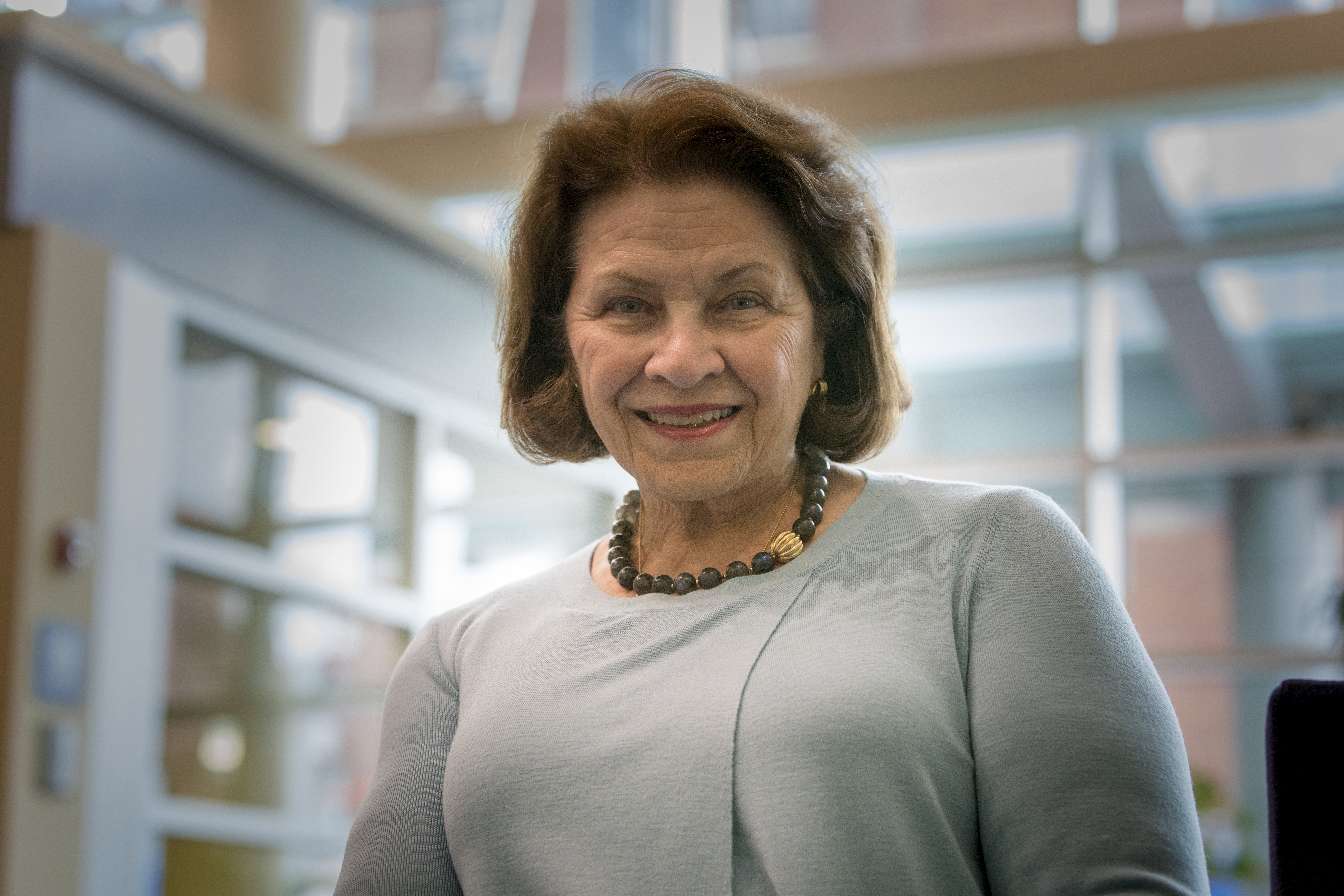Lung Cancer Screening Allows Early Cancer Detection
 Seven years ago, Patricia Tierney, 74, was diagnosed with a rare type of cancer on her tongue.
Seven years ago, Patricia Tierney, 74, was diagnosed with a rare type of cancer on her tongue.
In search of the best treatment, the Lexington, Ky., resident visited several top cancer centers across the country before choosing to travel 500 miles to the University of Maryland Medical Center (UMMC).
The cancer was treated successfully, and she returned to UMMC regularly for follow-up exams. All of her exams had been clear — until one day in May 2015.
Her routine CT scan showed a small tumor in her lung. William F. Regine, MD, chairman and professor of radiation oncology at the University of Maryland School of Medicine (UMSOM) and chief of radiation oncology at UMMC's Marlene and Stewart Greenebaum Cancer Center, broke the news to her that she had lung cancer.
"I never suspected I had lung cancer. I had no pain and no cough," Tierney said.
Often, people with lung cancer aren't diagnosed until they have symptoms such as a cough that doesn't go away, hoarseness, shortness of breath or chest pain. By that point, the cancer is usually advanced.
Tierney was referred to Ashutosh Sachdeva, MBBS, assistant professor of medicine at the UMSOM and director of interventional pulmonology at UMMC's University and Midtown campuses. He performed a relatively new screening to detect the stage of her cancer – a low-dose CT scan that gives people at high risk for lung cancer the opportunity to be screened earlier, sometimes before any symptoms arise.
After meeting with her doctors, Tierney decided UMMC University and Midtown campuses were the best places for her treatment.
"Dr. Sachdeva's confidence and his ability to explain to me what my care plan would be helped me make the easy decision to continue treatment at University of Maryland," she said.
The multidisciplinary team of interventional pulmonologists, thoracic surgeons, chest radiographers, radiation oncologists and medical oncologists worked together to determine Tierney's personalized treatment plan.
"The more minds you can put together, the better care options that can be drawn up for a patient; that's been the philosophy with our cancer program and that's been my own personal philosophy," said Regine. "I've always been proud of being part of the team we have here to provide specialized cancer care."
By using a bronchoscope, Sachdeva placed several gold seeds in or near Tierney's tumor as markers to guide the radiation treatment in order to make it more targeted and effective. A week later, she was back at UMMC to have the seeds implanted in a simple outpatient procedure. She returned at the end of July for five radiation treatments, guided by those seeds and delivered precisely to her tumor.
In November, a CT scan showed that Tierney's lung cancer was gone.
"I am so grateful for the excellent care I've received from my doctors at UMMC," she said. "I know first-hand that their 'patient first' approach to care works."
RISK IS WORTH THE REWARDUMMC Midtown Campus has been offering low-dose CT lung cancer screening for more than a year, and the cost is covered by Medicare. The test is non-invasive: A CT scan uses a series of X-rays to provide detailed images of the lung and identify lesions that might be cancerous. The test takes just a few seconds.
According to the American Lung Association, lung cancer has an 88 percent survival rate when caught early and treated.
"Some people worry about the radiation exposure from the test. However, it's low-dose and they aren't getting as much radiation as they would with a normal CT scan," said Sachdeva. "And, we're able to diagnose lung cancer at an early stage, offering a higher survival rate."
For people with clean scans, doctors may recommend follow-up scans every three years depending on their overall health and other risk factors. If the scan detects a potential problem, Sachveda said, that doesn't automatically mean a diagnosis of cancer.
"We reassure the patient and discuss the findings," he said. "They may need a followup scan, a biopsy or a surgical biopsy, depending on the extent and the size of the nodule."
If a biopsy is recommended, doctors can use navigational bronchoscopy to guide small catheters and tools to the site of the problem.
"We have the technology to get to nodules safely without risking major complications," Sachdeva said.
Navigational bronchoscopy is an outpatient procedure that uses a short-acting anesthetic. Patients generally get their results in two to three days. If a surgical biopsy is needed, patients will be cared for by UMMC's team of highly skilled thoracic surgeons.
